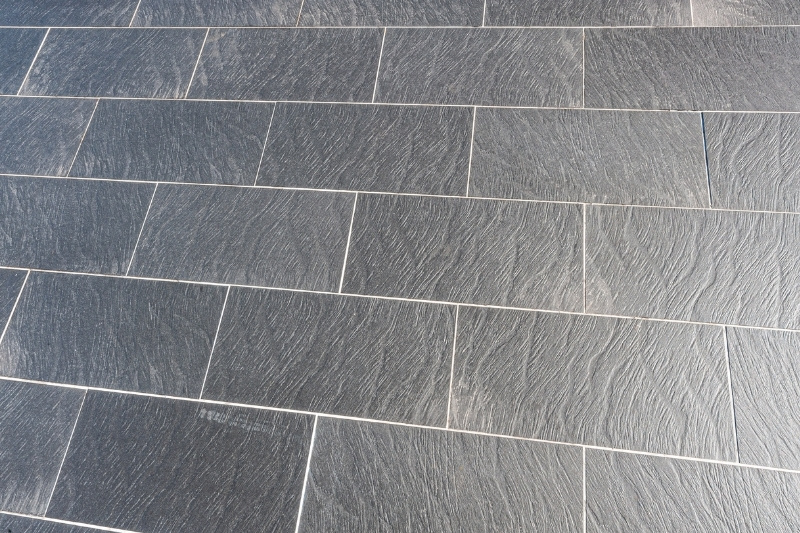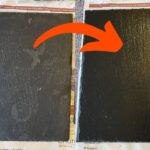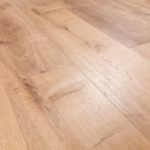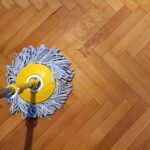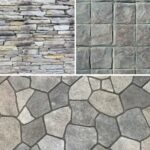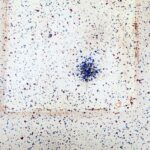Slate floors are a great addition to any home. However, they need to be maintained if you want to keep them looking fresh.
Unfortunately, slate easily absorbs stains and can become chipped. Not to worry though, just follow these steps to give your floor a good clean without causing any damage.
How to Clean a Slate Floor
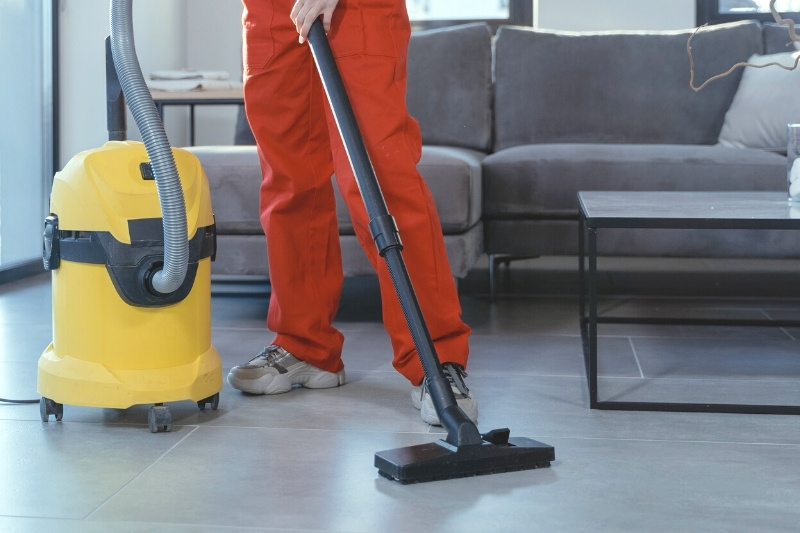
1. Sweep or hoover the floor
Using a soft bristle brush, sweep the floor for any loose dirt. Ensure not to use a brush with hard bristles—they will damage the slate.
2. Dust the floor
If you have a clean dust mop, sweep across the floor from one point to another, avoiding a change of direction. You could also use dust cloths but these will be less effective.
3. Create a water and detergent mixture
Fill a bucket with warm water and mix in 50-70 ml of gentle detergent or washing up liquid.
Alternatively, use a water/vinegar mixture. Mix one part vinegar (either apple cider or white vinegar) to one part warm water.
4. Time to mop
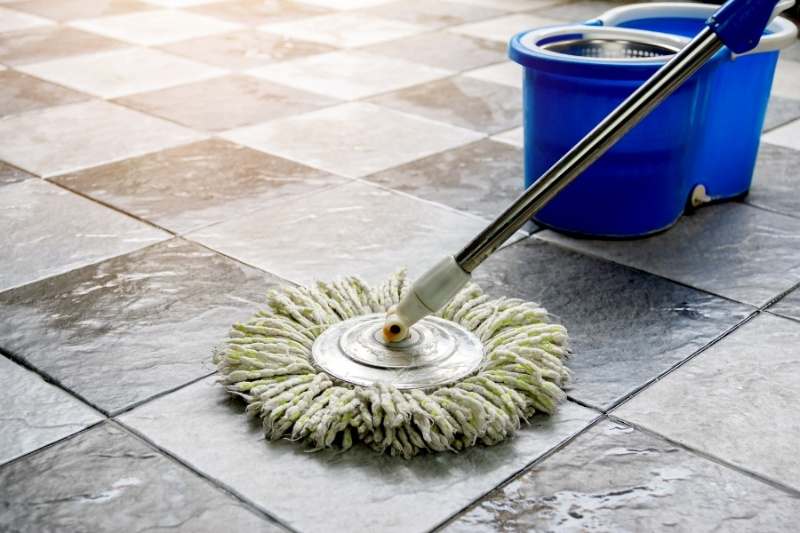
Slowly work the mop from one section of the floor to another, rinsing and wringing out as you go.
If the bucket of water appears dirty at any point, rinse it out and make another before continuing to mop the floor. If you have one, using a steam mop is a good idea.
5. Wipe and leave to air dry
Choose a soft towel or cloth to lightly wipe any excess water off the slate tiles. Then leave the slate to air dry on its own.
6. Use a smidge of teak or slate oil
Use a clean soft cloth to smudge in a small layer of teak or slate oil. Make sure you do this after the slate has fully dried.
7. Apply a sealant
Use a clean mop to wipe the sealer across the slate floor – it’ll help to prevent stains from forming. Most hardware shops will sell stone and tile sealers.
Slate Floor Stain Removal Tips
1. Wipe up spills asap
Act on any spills straight away if you can. This will prevent them from settling into the cracks in the slate.
2. Rub out stains
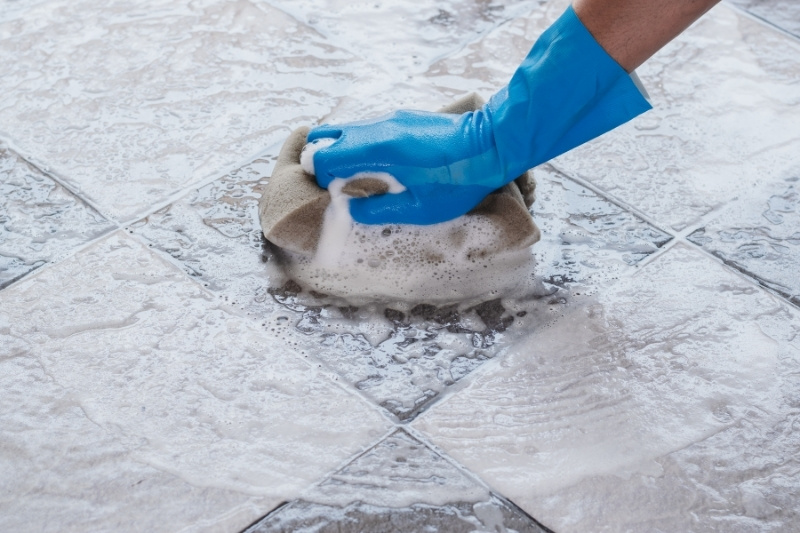
Fill up a bucket with warm water and dish soap. Grab a clean soft brush or sponge and work the soapy water into the stain. Ensure not to use a brush with harsh bristles or cleaning products with acidic or abrasive ingredients.
3. Use hydrogen peroxide
Unless your floors have coloured grout, hydrogen peroxide can help get stains out.
Find an empty spray bottle and fill it with half water and half hydrogen peroxide. Spray onto the stained area and leave for a few minutes before using a soft brush or sponge to give the floor a scrub.
4. Use hydrogen peroxide and bicarbonate of soda
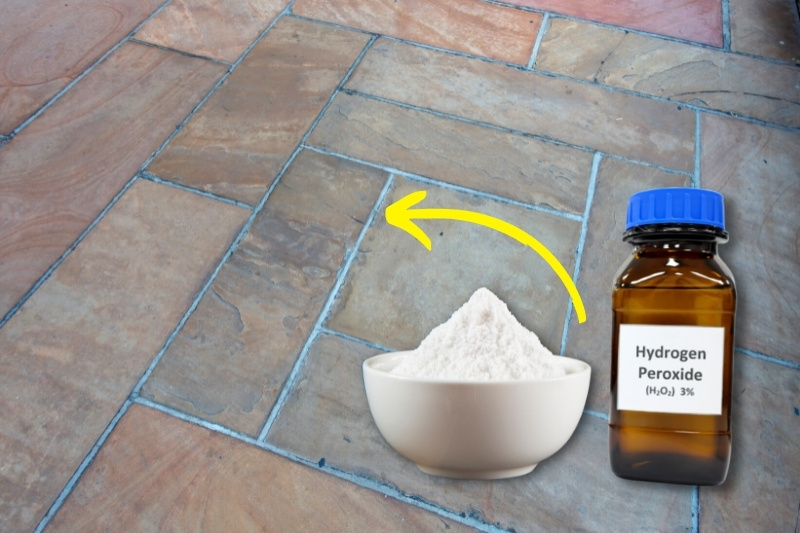
If that stain still won’t budge it’s time to get the bicarbonate of soda (baking soda) out! Combine a pinch or two of bicarbonate of soda with a small amount of hydrogen peroxide.
After the bubbles have stopped, you can top the stain with the paste you’ve created. Leave it for 5-10 minutes then wipe off with a clean cloth.
5. Use shaving cream on coloured grout
You don’t want to be bleaching anything coloured! Not to worry though, shaving cream is an alternative option and can be used on coloured grout.
Squirt the shaving cream onto the stains and leave for 10-20 minutes.
Remove with warm water and a soft cloth or towel. If you’re nervous about trying this for the first time then spot test before you get going!
6. Pour absorbent material on oil stains
For any stains that are more oil-based, layer on a one-part bicarbonate of soda, one-part water paste, and leave to dry.
Scrub off with a non-bristled brush and hoover up afterwards.
7. Don’t use bleach
Bleach could cause irreversible damage to the slate. And don’t use a brush with bristles that could leave the floor with scratches.

Hi, I’m Bron. I’m an elite endurance athlete, love the outdoors and anything involving food! All of which have the potential to make a mess! I don’t have a huge concentration span (and like to use the excuse of being too busy), so go for quick and easy cleaning methods where possible!
